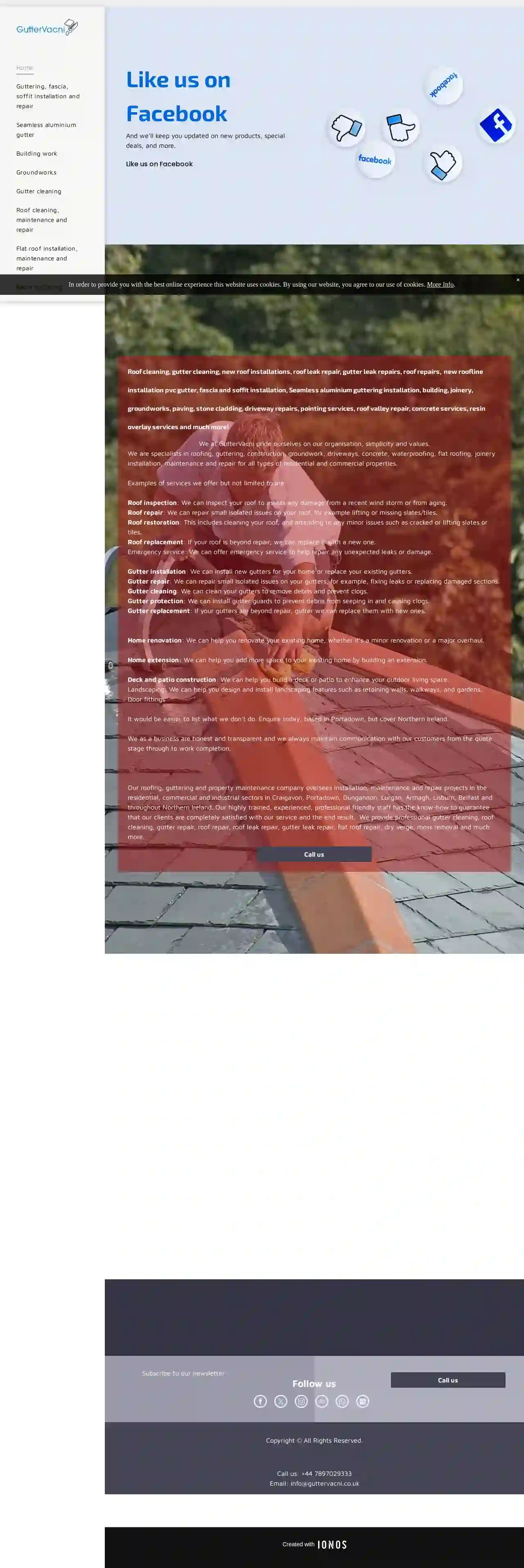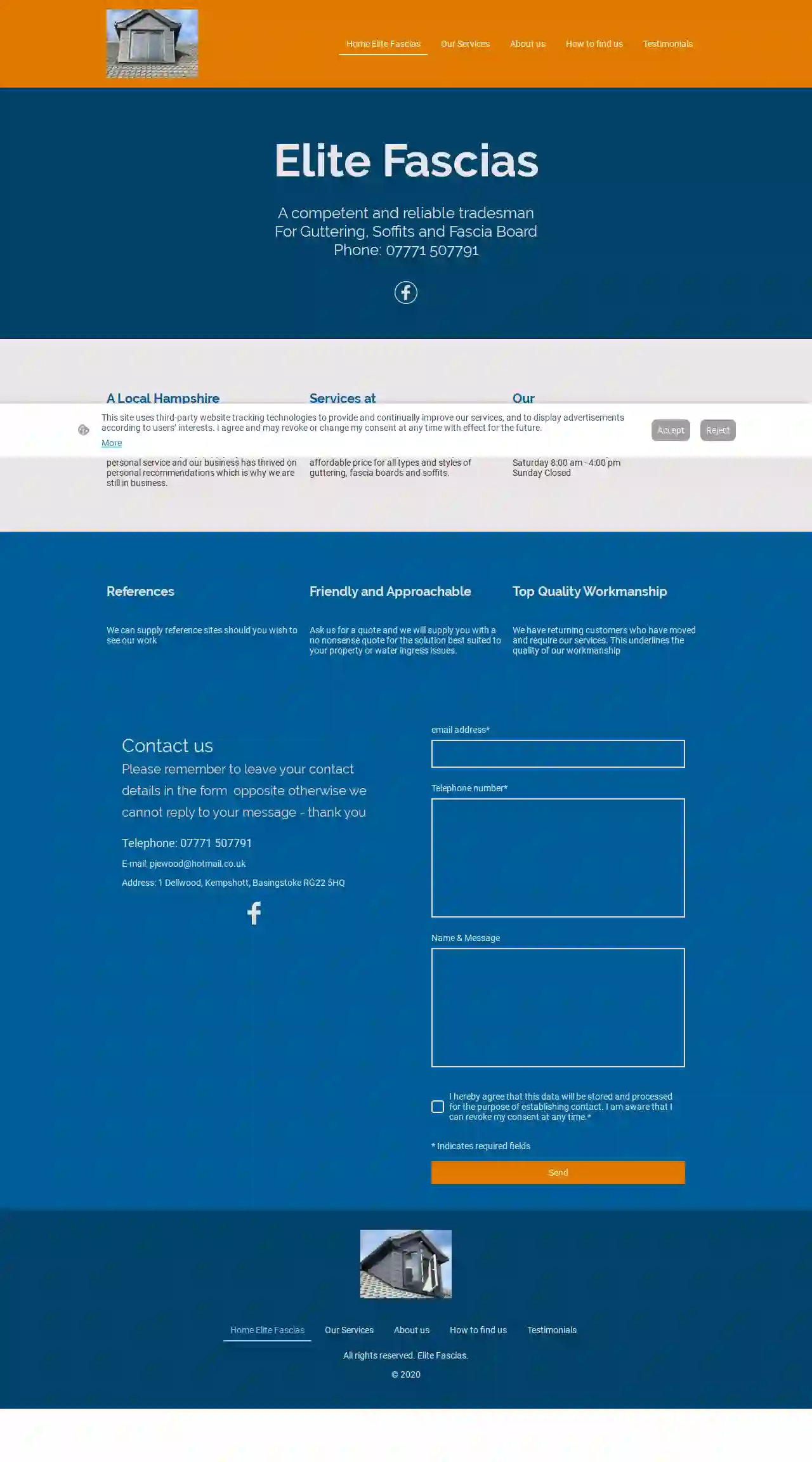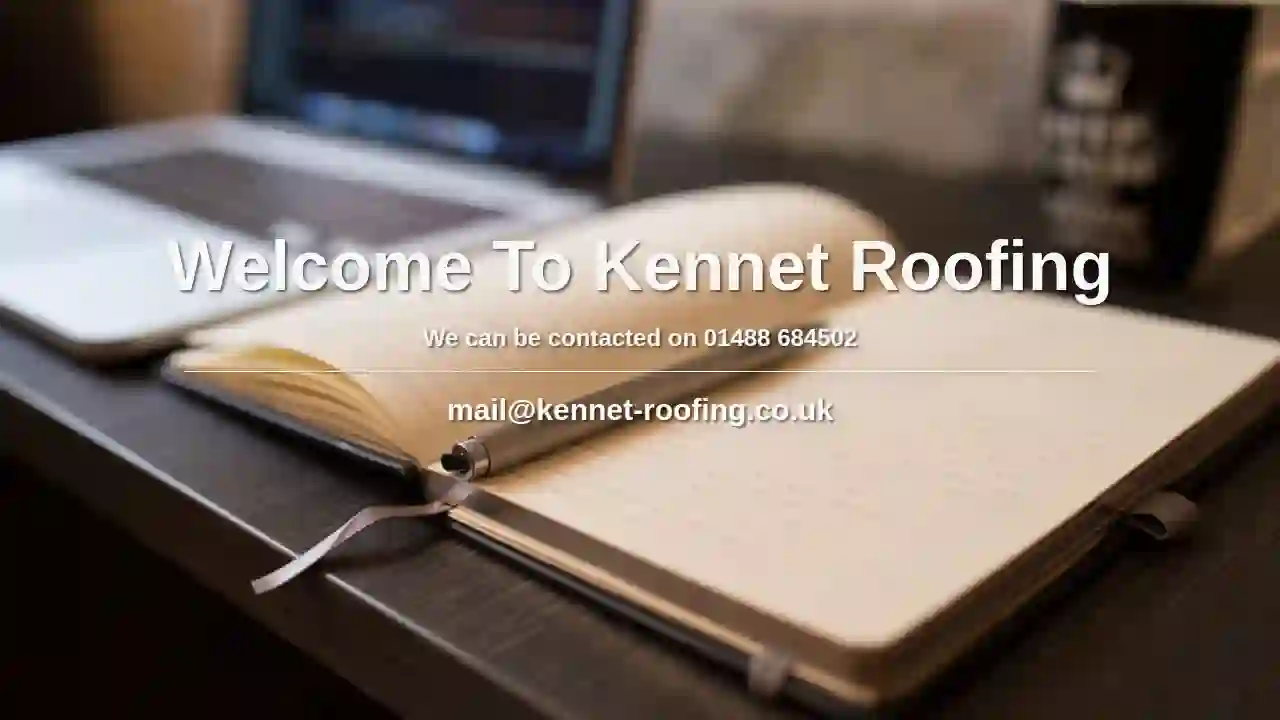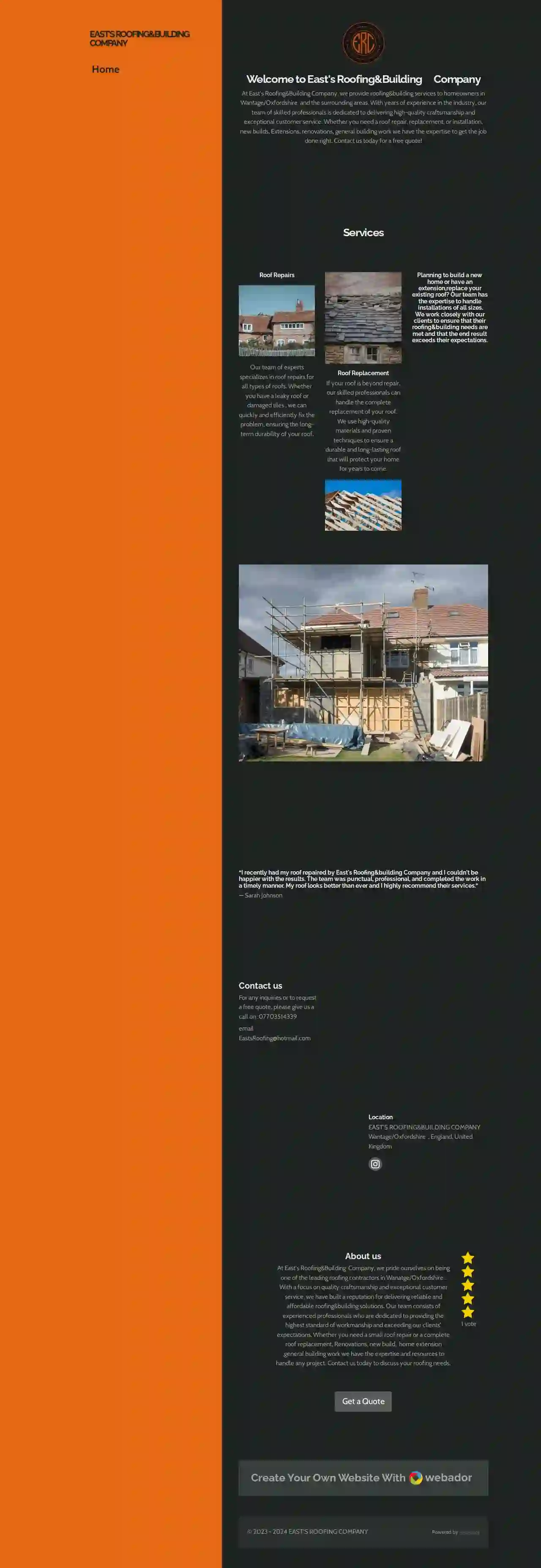Roofing Companies Lambourn
Find top Roofing Company in Lambourn
Get up to 3 Roofing Companies quotes for your project today! Compare profiles, reviews, accreditations, portfolio, etc... and choose the best offer.

Look Sharp Roofing Swindon
513 reviews43 - 45 Devizes Rd, Swindon, SN1 4BG, GBLook Sharp Roofing is a family-run business based in Swindon, Wiltshire. We have over 15 years of experience in the roofing industry and pride ourselves on providing a high-quality, reliable service to our customers. We offer a wide range of roofing services, including pitched roofing, flat roofing, listed roofing, guttering, fascias, soffits, repairs and maintenance, and chimney removal and repointing. We also offer solar PV installation services. Our team of experienced roofers are fully qualified and insured, and we are committed to providing our customers with the best possible service. We use only the highest quality materials and we always work to the highest standards. We are also members of the National Federation of Roofing Contractors. We offer free, no-obligation quotes and we are happy to answer any questions you may have about our services. Contact us today to find out more.
- Services
- Why Us?
- Gallery
Get Quote
GutterVacNi
4.937 reviewsGBWe at GutterVacni pride ourselves on our organisation, simplicity and values. We are specialists in roofing, guttering, construction, groundwork, driveways, concrete, waterproofing, flat roofing, joinery installation, maintenance and repair for all types of residential and commercial properties. Examples of services we offer but not limited to are Roof inspection: We can inspect your roof to assess any damage from a recent wind storm or from aging. Roof repair: We can repair small isolated issues on your roof, for example lifting or missing slates/tiles. Roof restoration: This includes cleaning your roof, and attending to any minor issues such as cracked or lifting slates or tiles. Roof replacement: If your roof is beyond repair, we can replace it with a new one. Emergency service: We can offer emergency service to help repair any unexpected leaks or damage. Gutter installation: We can install new gutters for your home or replace your existing gutters. Gutter repair: We can repair small isolated issues on your gutters, for example, fixing leaks or replacing damaged sections. Gutter cleaning: We can clean your gutters to remove debris and prevent clogs. Gutter protection: We can install gutter guards to prevent debris from seeping in and causing clogs. Gutter replacement: If your gutters are beyond repair, gutter we can replace them with new ones. Home renovation: We can help you renovate your existing home, whether it’s a minor renovation or a major overhaul. Home extension: We can help you add more space to your existing home by building an extension. Deck and patio construction: We can help you build a deck or patio to enhance your outdoor living space. Landscaping: We can help you design and install landscaping features such as retaining walls, walkways, and gardens. Door fittings It would be easier to list what we don't do. Enquire today, based in Portadown, but cover Northern Ireland. We as a business are honest and transparent and we always maintain communication with our customers from the quote stage through to work completion.
- Services
- Why Us?
- Gallery
Get Quote
Bob Shearer Property Maintenance Building & Roofing
51 reviewsAndover, GBNew World Digital Media are making a website here... It will be up and running soon For any enquiries regarding this website, please contact New World Digital Media. Visit Our Website
- Services
- Why Us?
- Gallery
Get Quote
Empire Roofing Services Ltd
54 reviewsOxford, GBEmpire Roofing services (Oxford) Ltd is one of the leading roofing companies in Oxfordshire and the surrounding counties. We offer a fully insured pitched roofing and flat roofing service covering all areas of the industry and are Vinci and VIVO approved. Our team is fully qualified and accredited with all major companies within the roofing sector. We have a vast wealth of experience within both domestic and commercial sectors, which our past projects prove are delivered within budget and timescale. If you have any enquires please call 01993 259226 or email [email protected].
- Services
- Why Us?
- Accreditations
- Testimonials
- Gallery
Get Quote
Elite Fascias
54 reviewsDellwood, Kempshott, 1 Dellwood, Basingstoke, RG22 5HQ, GBElite Fascias is a family-run business with over 25 years of experience in providing high-quality guttering, fascia boards, and soffits. We pride ourselves on our commitment to customer satisfaction, offering reliable and affordable services. Our reputation for quality workmanship has been built on word-of-mouth recommendations from satisfied customers. We understand the importance of addressing water ingress issues promptly and effectively, and we strive to provide solutions that meet the specific needs of each client. Whether you require a simple repair or a complete replacement, Elite Fascias is your trusted partner for all your fascia, soffit, and guttering needs.
- Services
- Why Us?
- Our Team
- Testimonials
- Gallery
Get Quote
Kennet Roofing
4.73 reviewsSwindon, GBWelcome To Kennet Roofing
- Services
- Why Us?
Get Quote
East’s roofing company
Wantage/Oxfordshire, Wantage, GBAt East's Roofing&Building Company, we provide roofing&building services to homeowners in Wantage/Oxfordshire and the surrounding areas. With years of experience in the industry, our team of skilled professionals is dedicated to delivering high-quality craftsmanship and exceptional customer service. Whether you need a roof repair, replacement, or installation, new builds, Extensions, renovations, or general building work, we have the expertise to get the job done right. Contact us today for a free quote!
- Services
- Why Us?
- Testimonials
- Gallery
Get Quote
APM Roofing Swindon
GBAPM Roofing Contractors provide roofing services throughout Swindon and the surrounding areas. Our team of professionals are always on call to help, 24 hours a day. We Specialise in Providing Roofing Services APM Roofing Contractors have been operating throughout Swindon for many years. Our team have developed a reputation for their quality services. One of the reasons for this is their commitment to detail. Our team will ensure that your expectations are met, and you are 100% satisfied with the results. Our team provide a range of roofing services throughout Swindon. On-call 24 hours a day, our team can be at your property within the hour and put a long-lasting solution in place. For more information or a free quotation, get in touch with our team. Our roofers are always ready and waiting to help you.
- Services
- Why Us?
- Accreditations
- Our Team
- Testimonials
- Gallery
Get Quote
Country Roofing Ltd
3.97 reviewsGBCountry Roofing Ltd is a roofing company based in the Cotswolds and Oxfordshire area, with 20 years of experience. They pride themselves on their excellent reputation, long list of satisfied clients, superior craftsmanship, attention to detail, clear communication, honesty, and integrity. They offer a free surveying and estimating service for all their clients, ensuring a professional and honest approach to any roofing project, regardless of size. They use a range of materials, from felt to tiles, to create stable, functional roofs that look great and stand the test of time. They are committed to providing outstanding service and finish, backed by a 35-year guarantee. In addition to traditional roofing services, they also offer a range of other services, including guttering installation, fascia and soffit works, loft conversions, and chimney repairs.
- Services
- Why Us?
- Our Team
- Testimonials
- Gallery
Get Quote
David Jameson Roofing Services Ltd
4.614 reviews286 Tandragee Road, Portadown, BT62 3RB, GBDavid Jameson Roofing Services Ltd, a 2nd generation family run business established in 1985, is based in Portadown, Co Armagh and covers the whole of Ireland and the United Kingdom. We are committed to providing an exceptional service based on over 50 years of experience! We offer a Highly Specialized Service in the Flat Roofing and Asbestos Industry. Within our service we carry out ‘All types of Roofing’. We are proud to have built a strong reputation based on our quality approach with full membership of the National Federation of Roofing Contractors and providing our customers insurance backed warrantees on all new full roof systems, plus our position as a registered and licensed Asbestos Removal Expert and Surveyor. Our workforce consists of highly trained craftsmen, who are trained and competent in all types of Roofing, Repairs, Maintenance, Re-Roofing & Asbestos Removals and surveys. The experience and skill of our specialist workforce specify solutions for each individual contract.
- Services
- Why Us?
- Accreditations
- Gallery
Get Quote
Over 12,314+ Roofing Companies in our network
Our roofing contractors operate in Lambourn and surroundings!
Roofyng.co.uk has curated and vetted the Best Roofing Companies in and around Lambourn. Find a trustworthy contractor today.
Frequently Asked Questions About Roofing Companies
- Home Improvement Loans: Offered by banks or credit unions.
- Home Equity Loans or Lines of Credit: Use your home's equity as collateral.
- Government Programs: Check for energy efficiency rebates or grants.
- Contractor Financing: Some roofing companies offer financing plans.
- Experience: 'How long have you been in business, and what experience do you have with my type of roof?'
- Licensing and insurance: 'Are you licensed and insured, and can I see proof of coverage?'
- Warranties: 'What warranties do you offer on your work and the materials used?'
- References: 'Can you provide references from past clients?'
- Project Timeline: 'What is the estimated timeline for completing the project?'
- Payment Terms: 'What are your payment terms, and do you require a deposit?'
- Communication: 'How will you keep me updated on the project's progress?'
- Cleanup: 'What steps will you take to protect my property during the project and ensure proper cleanup afterward?'
- Ventilation: Soffit vents provide intake ventilation, allowing fresh air to enter the attic and regulate temperature and moisture.
- Aesthetics: It creates a finished look to the roof's underside.
- Pest Control: A properly sealed soffit prevents pests like birds and squirrels from nesting in the attic.
- Safety First: Avoid going onto the roof during a storm, as it's dangerous.
- Document the Damage: Take photos and videos of the damage for insurance purposes.
- Contact Your Insurance Company: Report the damage to your insurance company as soon as possible to initiate a claim.
- Temporary Repairs: If safe, address any immediate leaks using buckets or tarps to minimize further damage.
- Contact a Roofing Contractor: After the storm, have a qualified roofing contractor inspect the roof and provide a repair estimate.
How can I get financing for a new roof?
What questions should I ask a roofing contractor?
What is a soffit, and why is it important for my roof?
What should I do if my roof is damaged in a storm?
How can I get financing for a new roof?
- Home Improvement Loans: Offered by banks or credit unions.
- Home Equity Loans or Lines of Credit: Use your home's equity as collateral.
- Government Programs: Check for energy efficiency rebates or grants.
- Contractor Financing: Some roofing companies offer financing plans.
What questions should I ask a roofing contractor?
- Experience: 'How long have you been in business, and what experience do you have with my type of roof?'
- Licensing and insurance: 'Are you licensed and insured, and can I see proof of coverage?'
- Warranties: 'What warranties do you offer on your work and the materials used?'
- References: 'Can you provide references from past clients?'
- Project Timeline: 'What is the estimated timeline for completing the project?'
- Payment Terms: 'What are your payment terms, and do you require a deposit?'
- Communication: 'How will you keep me updated on the project's progress?'
- Cleanup: 'What steps will you take to protect my property during the project and ensure proper cleanup afterward?'
What is a soffit, and why is it important for my roof?
- Ventilation: Soffit vents provide intake ventilation, allowing fresh air to enter the attic and regulate temperature and moisture.
- Aesthetics: It creates a finished look to the roof's underside.
- Pest Control: A properly sealed soffit prevents pests like birds and squirrels from nesting in the attic.
What should I do if my roof is damaged in a storm?
- Safety First: Avoid going onto the roof during a storm, as it's dangerous.
- Document the Damage: Take photos and videos of the damage for insurance purposes.
- Contact Your Insurance Company: Report the damage to your insurance company as soon as possible to initiate a claim.
- Temporary Repairs: If safe, address any immediate leaks using buckets or tarps to minimize further damage.
- Contact a Roofing Contractor: After the storm, have a qualified roofing contractor inspect the roof and provide a repair estimate.